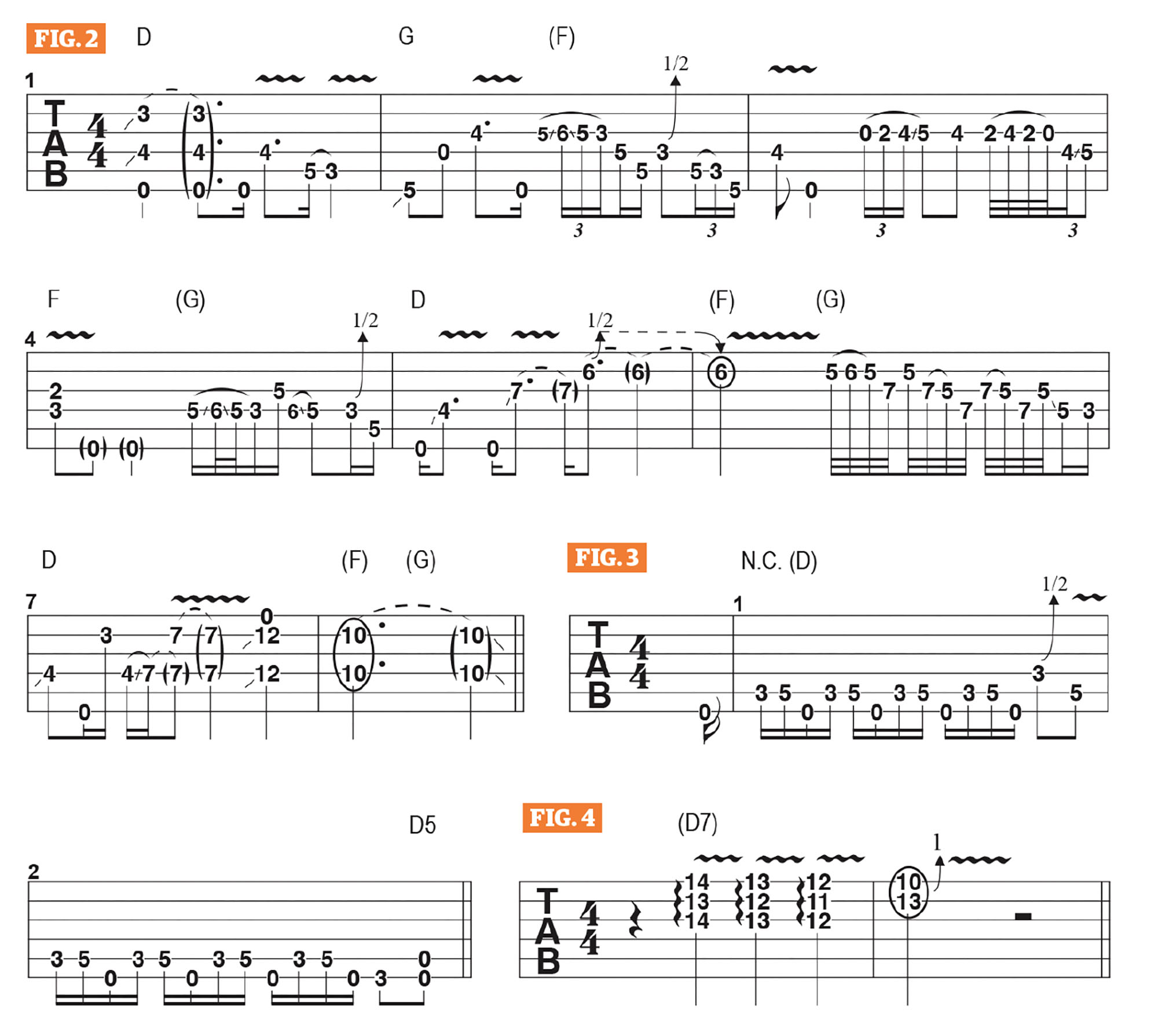Last month, I talked about how I devised the primary riffs in the title track to my 2023 album Hard Wired, which is played in drop D tuning (low to high: D, A, D, G, B, E). I’d now like to share some of the varied approaches and techniques I use in the song’s breakdown and solo sections.
One of the cool things about the breakdown section is that I take the opportunity to interpret the chord progression in different ways. The first thing I do is switch things up by establishing a progression of D - G - F. But instead of playing straight major chords or root-5th power chords, I like to bring in the sound of open strings to help broaden the harmony, as well as the timbre.
One way I accomplish this is to keep an open D string in the mix for all of the voicings. As shown in Figure 1, I play a G chord by fretting the low G on the 6th string’s 5th fret, played along with the open 4th string and a B note at the 4th fret on the G string.

I then slide this shape down two frets to sound F on the 6th string’s 3rd fret along with the open 4th-string D and an A note at the 2nd fret of the G string. I end with a D chord sounded by the open low D along with the notes F# and D on the D and B strings, respectively. Be sure to allow all of the strings to ring throughout.
While improvising over these sections, I like to emphasize the sound of F#, the major 3rd of D, moving to the minor 3rd, F, which then becomes the root note for the F chord. To me, there ‘s something beautiful about messing with those double-stops of D and F# over the D chord and then C and F over the F chord.
As shown in Figure 2, I slide into fretted F# and D notes, sounded along with the open low D, then move to G followed by a single-note riff that’s based on the D blues scale (D, F, G, Ab, A, C).
In bar 3, over D, I freely move through the D Mixolydian mode (D, E, F#, G, A, B, C) with hammer-ons, pull-offs and slides, followed in the next bar with reference to F then more D blues scale riffs. Bars 5 and 6, are played with the same approach, with all of the riffs freely improvised, as are bars 7 and 8.
By playing two-bar phrases like these, initially establishing the chord changes and then moving into solo lines, I’m replicating the tandem approach of rhythm and lead guitars, as the leads effectively “answer” the chords.

The solo section then kicks off with a heavy riff that sits right on the D chord. As shown in Figure 3, I repeatedly play C and D notes over the open low D and resolve at the end of each bar to an F note that I proceed to bend up a half step to F#.

I then flow into the solo with triads played on the top three strings, either moving chromatically downward, as in Figure 4, or upward, as in Figure 5. In Figure 6, I use my pick-hand index finger to tremolo strum the triads in a Jimi Hendrix-like way.
Next month, we’ll take a deeper dive into the techniques I used to develop the solo section of Hard Wired. See you then.
- This article first appeared in Guitar World. Subscribe and save.







